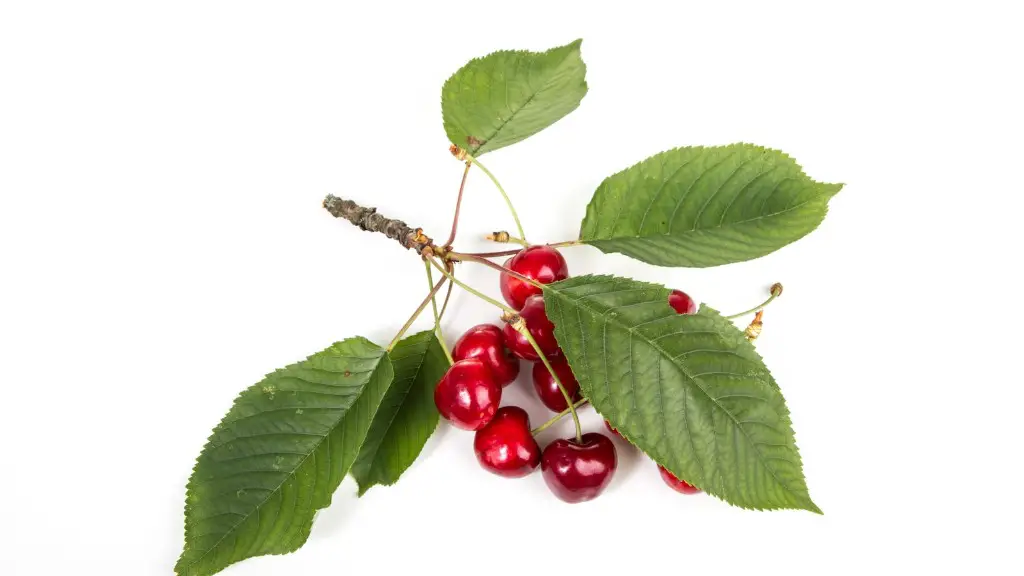Introduction
Growing a cherry tree can be a rewarding and fulfilling experience, however, it may not be as easy as it may initially seem. It is important to know how to properly plant and maintain the cherry tree -to ensure that it remains healthy and strong and can produce fruits. In this article, we will explore the details of planting and caring for a cherry tree, as well as share insights and perspectives from experts on the matter. We will also look at the factors that can influence the growth of the cherry tree and provide advice on how to get the best results.
Cherry Tree Varieties
The different varieties of cherry trees have different characteristics and planting needs. The most common cherry tree varieties are sweet cherries, which are typically used for eating fresh or for making jams and desserts. Sour cherries, on the other hand, are usually used for cooking and canning purposes. Both sweet and sour cherry types need full sun, slightly acidic soil, and moist, well drained soil in order for them to grow their best. When choosing a variety of cherry tree to grow, it is important to consider the climate and where the tree is going to be planted.
Planting and Maintenance
When it comes to planting and maintenance of a cherry tree, there are several steps that need to be taken in order to ensure its successful growth. Firstly, the soil should be prepared – amended with compost to make sure it is rich and fertile, and it should also be slightly acidic. The tree should then be planted in an area that has access to full sun and good drainage. During the first two years, it is important to regularly water the cherry tree – about once a week – in order to ensure healthy growth. Additionally, the tree may need to be pruned and fertilised in order for it to thrive. Proper fertilising and pruning can help the tree to produce more and larger fruits.
Factors that can Influence Growth
Apart from the proper planting and maintenance of the cherry tree, there are other factors that can influence its growth. These include environmental conditions such as extreme temperatures, and pests and diseases such as cherry fruit fly or cherry leaf spot. Additionally, if the cherry tree is exposed to too much or too little rain or too much heat, it will not be able to produce a large amount of fruit. It is important to check the environment regularly and adjust fertilising, watering, and pruning accordingly.
Threats to Cherry Trees
It is important to keep in mind that there are various external threats that can harm a cherry tree and inhibit its growth. These threats include pests, diseases, and animals. In order to protect the cherry tree, it is important to keep birds away from the tree and to use insecticides and fungicides in order to prevent any pest or disease from damaging the tree and the fruit. Additionally, it is important to use good quality soil in order to provide the cherry tree with the nutrients it needs.
Experts’ Insights
When it comes to growing cherry trees, experts agree that it is important to provide the tree with the best conditions in order for it to thrive. According to horticulturalist Travis Parker, “Putting in some extra effort to make sure the soil is fertilised and nutrient-dense will make a big difference in the health of the tree.” Additionally, Janisse Ray, author of The Seed Underground, notes that an important step to ensure a cherry tree’s growth is to keep birds away from it. Ray adds, “It is essential to tie flags, old CDs, shiny tape or other deterrents around the tree in order to discourage birds from the tree.”
Tips on Growing a Cherry Tree
The following are some tips for successfully growing a cherry tree:
•Choose an appropriate variety according to the climate and local conditions
•Prepare and amend the soil before planting
•Ensure that the tree is planted in an area with full access to sun
•Water the tree regularly
•Prune the tree and fertilise it
•Monitor the environment for potential threats
•Use the correct insecticides and fungicides to prevent diseases and pests
•Provide the cherry tree with the right nutrients
Protecting the Cherry Tree
In addition to following the tips mentioned above, it is also important to ensure that the cherry tree is properly protected. Covering the tree in winter and using netting to keep birds away are two essential steps that need to be taken in order to keep the cherry tree safe and healthy. Additionally, using pest repellent and mulching around the tree can help deter pests and improve the soil.
Advanced Care of Cherry Tree
For those who want to take extra care of their cherry tree, there are several advanced techniques that can be used. For example, providing the cherry tree with additional compost, adding a layer of mulch, or pruning and training it in order to encourage more fruit production. Additionally, it is important to check for pests and disease regularly and take the necessary steps to prevent them from affecting the tree.
Harvest and Storage
Harvesting the cherry tree’s fruit is an important step in ensuring good quality and harvestable fruit. It is important to harvest the cherries when they are ripe and to pick and store them properly. Storing cherries properly can ensure that they stay fresh and can be used for a longer period of time. Additionally, it is important to keep an eye on the tree and observe any signs of disease and pests in order to protect the tree and the fruit.
Conclusion
Growing a cherry tree is not as hard as it may initially seem, as long as the right steps are taken and the tree is given the proper care and attention it needs. Choosing the right variety of cherry tree, preparing the soil and providing the tree with adequate water and nutrients are all essential steps to ensure successful growth. Additionally, keeping the tree safe from pests, birds and other external threats is essential in order to protect the tree and the fruit it produces. With the right care, a cherry tree can yield delicious fruits for many years to come.


